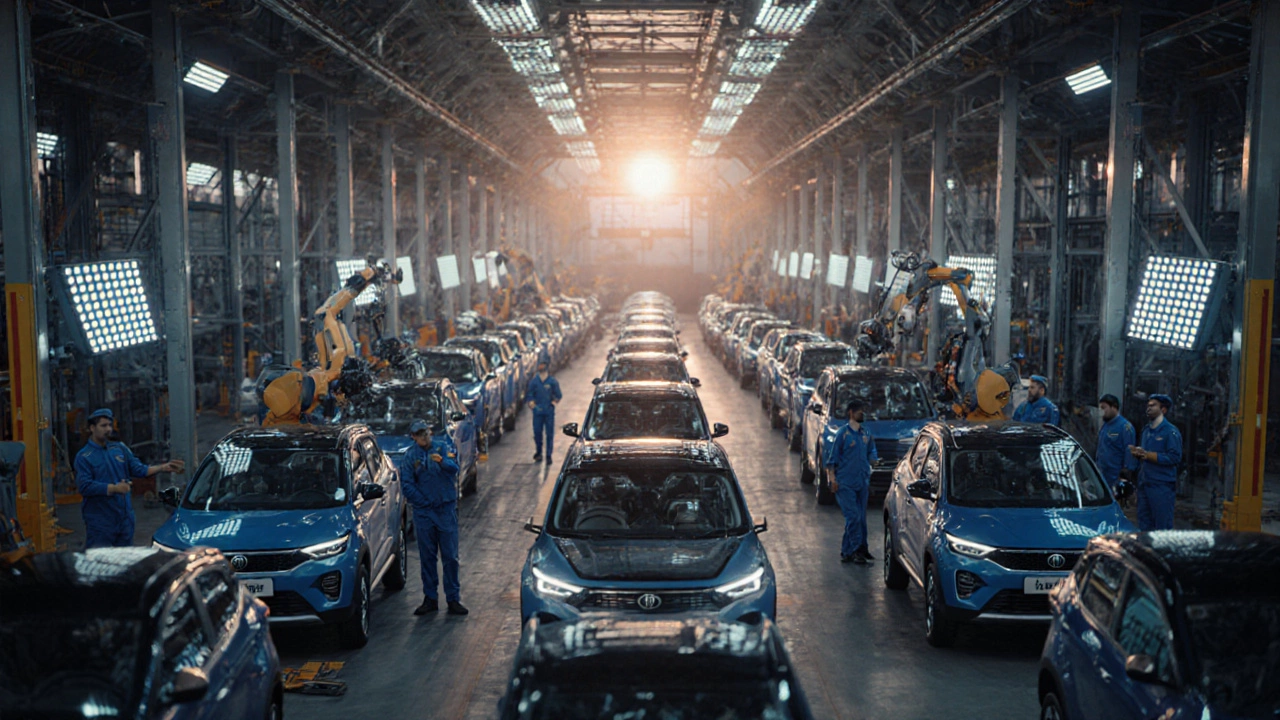- Food Industry Units Explained: Types, Functions & Key Metrics Oct 8, 2025
- Navigating the Path to Small Scale Manufacturing Success Dec 22, 2024
- How Many Textile Manufacturing Companies Are There in India? Feb 25, 2025
- Will Companies Pay for Ideas? Manufacturing Startup Insights Jun 3, 2025
- Start Manufacturing Your Idea: Step‑by‑Step Guide Oct 8, 2025
Made in India Cars: Top Brands, Production Numbers and What’s Driving the Boom
If you’re wondering which cars roll off Indian factories today, you’re in the right spot. India isn’t just a big market for imports; it’s a powerhouse where global giants and homegrown firms build everything from compact hatchbacks to rugged SUVs. In 2025, the country produced over 4 million passenger vehicles, and the mix of brands is more diverse than ever.
Top Car Brands Manufactured in India (2025)
Here’s a quick run‑down of the biggest names you’ll see with an Indian VIN:
- Maruti Suzuki – Still the volume leader, churning out the Swift, Baleno and Wagon R in huge numbers.
- Tata Motors – From the compact Tiago to the electric Nexon EV, Tata’s plant in Pune is a hub for both ICE and EV models.
- Hyundai – The Chennai plant makes the Creta, Venue and the new electric Kona, boosting Hyundai’s share in the market.
- Mahindra & Mahindra – Known for rugged pickups, Mahindra’s factories produce the XUV300 and the electric eVerito.
- Kia – Shares the Hyundai complex, cranking out the Seltos and Sonet, both popular among young buyers.
- MG Motor – The Indian‑made ZS EV is a fast‑growing electric SUV from the UK‑owned brand.
Foreign players like Toyota, Ford and Renault also have local assembly lines, but they rely heavily on joint ventures and component sourcing from Indian suppliers.
Why Indian Auto Manufacturing Is Growing Fast
Three forces are pushing the engine forward:
- Government incentives. The Production‑Linked Incentive (PLI) scheme rewards manufacturers that boost domestic output, especially in electric vehicles.
- Cost‑effective supply chain. India offers cheap labor, a deep pool of engineering talent, and a network of parts manufacturers that keep production costs low.
- Rising domestic demand. More Indians are buying cars as incomes rise, creating a virtuous cycle where higher sales fund new factories and technology upgrades.
These factors also make India a launchpad for exporting cars to emerging markets in Africa and South‑East Asia.
Another trend worth watching is the shift toward electric vehicles. The government’s push for 30% EV sales by 2030 has led major brands to set up dedicated EV lines. Expect to see more models like the Tata Tiago EV and Hyundai Ioniq 5 rolling out of Indian plants in the next few years.
What does this mean for you? If you’re a buyer, you get a wider choice of locally built cars that often come with better after‑sales support and lower ownership costs. If you’re an investor or supplier, the expanding factory network offers plenty of partnership opportunities.
In short, “Made in India” isn’t just a label—it’s a sign of a rapidly maturing auto ecosystem that blends global expertise with local efficiency. Keep an eye on the yearly production reports and the new model launches; they’ll give you the real pulse of where Indian car manufacturing is headed next.
Which car brands are made in India?
- Aarav Sekhar
- Oct 27, 2025
Discover which car brands are actually made in India, from Tata and Mahindra to Maruti Suzuki and Hyundai. Learn how India became a global auto manufacturing hub with locally designed, exported vehicles.
Top Car Brands Manufactured in India: The Complete 2025 Guide
- Aarav Sekhar
- Aug 4, 2025
Explore the real list of car brands made in India, including local and foreign companies, types of vehicles, and up-to-date manufacturing figures in 2025.

